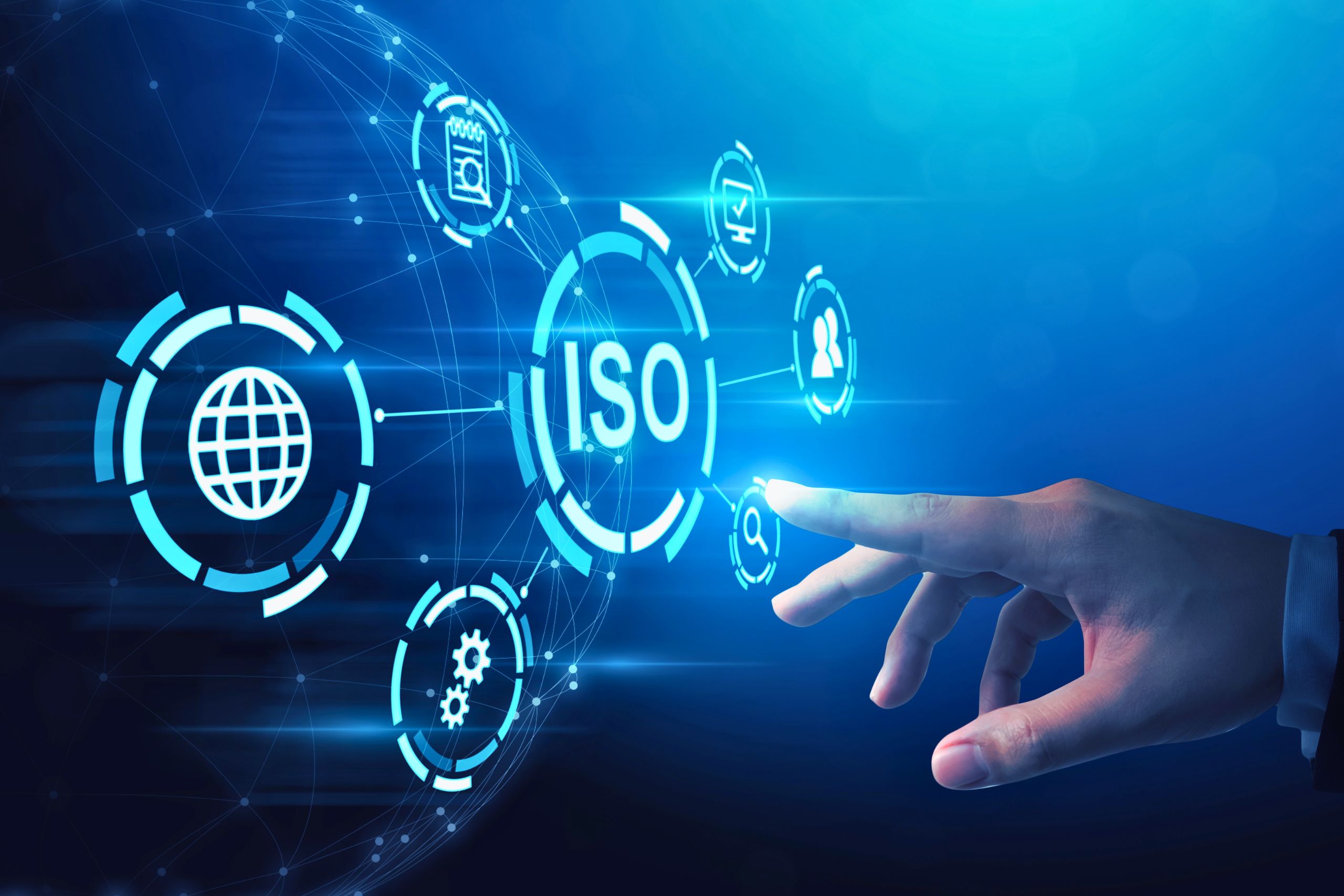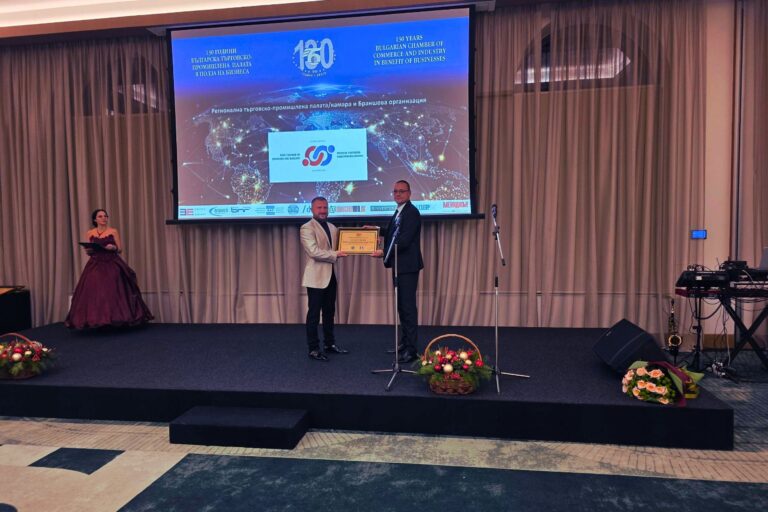Integrated Management Systems: How ISO Standards Support Growth and Trust
Introduction
In the dynamic and increasingly competitive business environment of the 21st century, organizations face numerous challenges – from quality management and environmental protection to ensuring employee health and safety and information security. In this context, a systematic approach to management becomes a key pillar of sustainable success. It enables organizations to structure their activities, minimize risks and achieve compliance with regulatory and market requirements.
ISO international standards play a key role in building this governance foundation. They provide a proven framework through which organizations can build transparent, measurable, and integrated processes. This not only increases internal efficiency, but also inspires trust with customers, partners, and investors – especially in environments where reputation and compliance are critical.
In this article, we will look at how four of the most important ISO standards can be integrated into a comprehensive management system:
- ISO 9001 – focus on process quality and customer satisfaction;
- ISO 14001 – aimed at environmental impact management;
- ISO 45001 – ensuring health and safety at the workplace;
- ISO 27001 – protection of information assets in the digital age.
We will analyze how unifying these systems leads to higher efficiency, lower operating costs, and a stronger market position. We will also discuss practical implementation steps, as well as the challenges and benefits of integration.
1. What are Integrated Management Systems (IMS)?
Integrated Management Systems (IMS) are a unified management framework that combines the requirements of two or more ISO standards. Instead of organizations maintaining separate management systems for quality, environment, health and safety, or information security, IMS allows all of these systems to be synchronized into a single, coordinated structure.
The essence of IMS is about harmonizing processes, policies, and resources in a way that eliminates duplication, increases efficiency, and facilitates control. This is especially valuable for organizations that want to minimize bureaucracy and focus their efforts on real results and sustainable development.
Advantages of unifying multiple ISO standards into one system
Management systems integration provides a number of strategic and operational benefits:
- Simplified administration – only one documentation system, a single audit process and one system for managing non-conformities and corrective actions;
- Lower costs – reduced resources for maintenance, internal and external audits and training;
- Increased transparency and control – management has more complete and timely information about key processes;
- Improved corporate culture – working together on integrated goals strengthens cooperation between departments;
- Higher value in certification – combined certification according to several standards brings competitive advantage and prestige.
How IMSs Facilitate Risk Management, Compliance, and Continuous Improvement
Integrated management systems are built around the principles of the process approach, risk analysis and continuous improvement (PDCA cycle). This means that through IMS:
- Organizations can systematically identify and manage risks that affect quality, safety, environment and health.
- Any new requirement (e.g. statutory, regulatory or customer) is introduced in a coordinated manner, without creating organizational chaos.
- Improvements are based on measurable results, objective analyses, and shared experience between teams.
Instead of viewing management systems as separate "towers," businesses are transforming them into connected modules of a holistic architecture—one that maintains stability, adaptability, and trust both internally and externally.
2. ISO 9001: Quality Management Standard
ISO 9001 is the most widely used international standard for quality management systems (QMS). It provides a framework for improving an organization's overall performance by focusing on quality in every aspect of the business, from strategic management to daily operations.
Basic principles: customer orientation, leadership, process approach
ISO 9001 is based on seven key principles of quality management, among which three stand out for their importance for sustainable success:
- Customer orientation – Understanding and meeting current and future customer needs is at the heart of any successful organization. This requires not only collecting feedback but also actively applying data for improvements.
- Leadership – Strong leadership sets a clear vision, engages employees, and creates a culture of responsibility and quality.
- Process approach – Managing activities as related processes allows for a better understanding of interrelationships, more efficient use of resources, and predictable results.
How ISO 9001 contributes to increased efficiency and satisfaction
Implementing ISO 9001 in an organization is not just an administrative act - it is a strategic move that brings measurable results:
- Improving internal organization through clearly defined processes and responsibilities;
- Reducing errors, defects and omissions through systematic management of non-conformities;
- Increasing customer satisfaction through consistent provision of quality products and services;
- Strengthening the company's image and reputation with partners, customers and regulators.
The standard also requires performance measurement and data analysis, which encourages informed decision-making and continuous improvement.
Example of an organization that improved its customer relations after implementation
Example: The German logistics company Hellmann Worldwide Logistics, after implementing ISO 9001 in its subsidiaries in Central and Eastern Europe, managed to reduce the time for handling complaints by 28% and increase the level of customer satisfaction by over 15%. The company introduced a system for traceability of customer inquiries, regular internal audits and annual management reviews – all in accordance with the structure of ISO 9001.
This example shows that implementing the standard is not an end in itself, but a means to better understand and serve the customer – which ultimately leads to stronger market positions and sustainable growth.
3. ISO 14001: Environmental Management and Sustainability
ISO 14001 is the international standard for environmental management systems (EMS) that helps organizations identify, manage, control and improve their environmental impact. It is applicable to any type of business, regardless of size or sector, and has become the foundation for sustainable development and corporate responsibility.
What does environmental management through ISO 14001 involve?
The ISO 14001 management system requires organizations to:
- Identify the environmental aspects and potential impacts of their activities, products and services;
- Set measurable improvement targets in areas such as waste, energy efficiency, resource use and emissions;
- Monitor compliance with environmental legal requirements;
- They implement procedures for managing incidents, environmental risks and continuous improvement of environmental performance.
This systematized framework creates a culture of commitment to sustainability, involving not only management but also employees at all levels.
Relationship between sustainable practices and company reputation
In an era of increased environmental awareness and demands from consumers, partners and investors, a company's ability to demonstrate environmental responsibility is of strategic importance. ISO 14001:
- Strengthens trust among stakeholders;
- Improves public image and corporate reputation;
- Opens opportunities for participation in "green" public procurement and preference in international trade negotiations.
Benefits of environmental management for small and medium-sized enterprises
Although often associated with large corporations, ISO 14001 also offers particular advantages for small and medium-sized enterprises (SMEs):
- Cost reduction – through energy efficiency, optimization of resources used and better waste management;
- Better risk management – thanks to clear procedures for controlling environmental incidents;
- Increased competitiveness – SMEs with ISO 14001 certification are often preferred suppliers by large customers and international partners.
Example: The Polish company EcoPol Packaging, a manufacturer of sustainable packaging, implemented ISO 14001 with the support of a local consultancy. Within a year, the company reduced its energy consumption by 12% and was able to secure new contracts with German customers for whom environmental commitment is a mandatory requirement.
4. ISO 45001: Occupational Health and Safety
ISO 45001 is the international standard for occupational health and safety management systems (OHSMS), which focuses on creating a safe, healthy and engaging work environment. The standard is applicable to all organizations, regardless of their size, sector or location, and is a fundamental tool for preventing work-related accidents, illnesses and related losses.
The importance of workplace safety as part of organizational culture
ISO 45001 promotes the building of safety culture, in which the health and well-being of employees are an integral part of management priorities. This includes:
- Identification and control of safety and health risks;
- Active participation of employees in the risk management process;
- Training and awareness of potential hazards and preventive measures;
- Introduction of incident response procedures and systematic tracking of results.
When safety is part of the organizational DNA, trust is created between management and employees, which increases commitment and effectiveness.
How ISO 45001 reduces incidents and increases motivation
Organizations that have implemented ISO 45001 typically note:
- Significant decrease in the number of work accidents and sick leave;
- Improved performance, as employees work in a safer and more predictable environment;
- Increased motivation and satisfactionbecause employees feel valued and protected;
- Better relationships with regulatory authorities, thanks to compliance with legal requirements.
Economic benefits of a proactive health and safety system
ISO 45001 is not just a cost – it is investment with significant returnProactive health and safety management leads to:
- Lower costs for compensation, insurance and litigation;
- Avoiding production interruptions as a result of accidents;
- Increased attractiveness as an employer, which facilitates the attraction and retention of qualified personnel;
- Competitive advantage when participating in tenders, especially for international projects where safety requirements are strict.
Example: The Spanish company Grupo Antolin, a supplier of automotive components, is implementing ISO 45001 across all of its 150 plants worldwide. As a result, it has seen a 35% reduction in incidents within the first two years of certification. This not only improves internal efficiency, but also increases trust from automakers such as BMW, Renault and Volkswagen.
5. ISO 27001: Information Security in the Digital Age
With the development of digital technologies and the increasing volume of data, information security has become a strategic priority for every organization. ISO 27001 is the international standard for information security management that provides a structured and systematic approach to protecting information – both digital and physical.
Why data protection is critical in modern business
The loss, leakage, or manipulation of sensitive data can lead to:
- Financial losses and sanctions under regulations such as GDPR;
- Loss of trust from customers, partners and investors;
- Reputational damage that is difficult to recover;
- Violation of operational activities and legal liability.
ISO 27001 builds a culture of information responsibility, by defining clear policies, procedures and controls to protect the confidentiality, integrity and availability of data.
How ISO 27001 helps protect against cyber threats and makes businesses more reliable
Implementing ISO 27001 helps organizations to:
- Identify risks in information systems and implement appropriate measures;
- Create policies for access, encryption, archiving, and incident response;
- Integrate security management into everyday business processes;
- Maintain compliance with national and international regulatory requirements.
The ISO 27001 system is particularly valuable for sectors that work with large amounts of sensitive information - such as financial institutions, healthcare, education, public administration and IT companies.
Implementation case in a company working with sensitive data
Example: The German software company DATEV eG, which provides cloud services and accounting solutions to over 500,000 customers in Germany and Austria, is implementing ISO 27001 to ensure the security of customer financial data. Following certification, the company reports:
- Reducing security incidents by over 60%;
- Greater confidence among customers regarding the processing of their data;
- Faster response to potential breaches, thanks to pre-built incident management plans.
6. Systems Integration – Challenges and Solutions
Implementing multiple standards separately – such as ISO 9001, ISO 14001, ISO 45001 and ISO 27001 – can lead to duplication of work, additional administrative burden and fragmentation of management processes. Here’s why the integration of management systems (Integrated Management System – IMS) is becoming a strategic approach for organizations striving for efficiency, coherence and sustainable development.
Practical steps for unifying multiple systems
Systems integration follows a structured and step-by-step process:
- Evaluation of existing systems – analyzing the implemented standards and identifying overlapping elements.
- Developing a common framework – creating a unified policy and goals applicable to all areas (quality, environment, safety, information security).
- Unification of procedures – formalizing common processes for document control, non-conformity management and internal audit.
- Integrated training and communication – informing and training staff about the new structure and expectations.
- Review and improvement – conducting a combined management review and planning of corrective actions.
Common elements that facilitate integration
Several key elements are found in all ISO standards and act as a natural basis for integration:
- Documentation – a unified approach to procedures, instructions and records;
- Risk management – systematic identification, analysis and control of risks, regardless of the type of standard;
- Internal audits – possibility of conducting combined audits that cover all areas simultaneously;
- Objectives and indicators – common KPI systems for tracking progress in different areas;
- Continuous improvement – enshrined as a principle in each of the core standards.
Role of management and staff engagement
Integration is not just a technical process – it requires strong management will and cultural changeSuccess depends on:
- Leadership and personal example by the management team;
- Employee engagementwho must understand and apply the unified principles;
- Communication, which explains the benefits of the integrated approach and maintains motivation.
Example practices include organizing internal campaigns, workshops on topics such as "One System - One Team", as well as active participation of teams in goal planning and internal audits.
7. How ISO standards build trust with partners and customers
In an increasingly competitive and globally connected marketplace, trust is one of the most valuable assets for any organization. Certification to internationally recognized standards such as ISO acts as a powerful signal of quality, responsibility, and professionalism. This trust is not built on words – it is based on verifiable practices, systems, and results.
Certification as a competitive advantage and a tool for market differentiation
ISO certificates are not just documents, but strategic market positioning toolsThey:
- Demonstrate compliance with internationally recognized standards;
- They assure partners that the organization follows clear and controlled processes;
- Give an advantage in tenders, public procurement and B2B partnerships;
- They speed up approval processes for new business deals.
Especially in sectors such as manufacturing, logistics, information technology and healthcare, having ISO certificates is often mandatory condition, not just a recommendation.
Impact on public perception and positioning in global supply chains
Companies that successfully implement and maintain ISO standards are often the preferred choice for:
- International corporationslooking for reliable suppliers;
- Multinational supply chains, where traceability, quality and sustainability are critical;
- Customers with high sensitivity to environmental and social aspectsthat require compliance with ESG principles.
In this way, ISO standards support integration in international trade and enhance the company's image both to partners and to society.
Trust through transparency and evidence of compliance
Every ISO system is built around the idea of provability and transparency – through clear documentation, recorded results, traceable actions and periodic audits. These mechanisms:
- They assure clients that risks are managed systematically;
- Provide assurance that the company complies with applicable regulatory requirements;
- They create a foundation for long-term relationships and stable business partnerships.
Publicly demonstrating compliance – for example by indicating ISO certification on the website, products or in offers – sends a clear message: "We act responsibly and according to established standards."
Conclusion
Integrated management systems (IMS), built on the foundation of ISO standards, offer a structured and effective approach to managing key aspects in an organization - from the quality of products and services, through the sustainable use of resources, to health, safety and information security.
Rather than being seen as an administrative burden, these standards are increasingly being perceived as strategic resource, which assists organizations in building trust, improving internal processes and creating competitive advantages in the domestic and international markets.
Many companies in Bulgaria and the region are already implementing integrated systems as part of their drive for sustainable development and high standards in management. In this process, the professional community and organizations such as the Ruse Chamber of Commerce and Industry can be useful partner, providing information, contacts and training opportunities on topics related to standards and good management practices.
In today's dynamic and interconnected business environment, an integrated approach to management is not just an advantage – it is a necessity for any organization that strives for sustainable growth, efficiency and trust from partners and customers.
Note: The publication was prepared with the help of generative artificial intelligence, which assisted in structuring and formulating the content. The final text is the result of the author's expert contribution, which guarantees its accuracy and practical focus.













